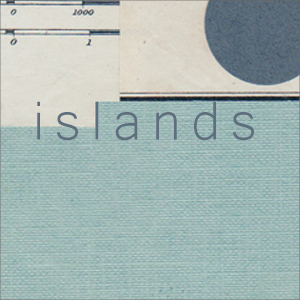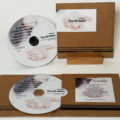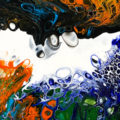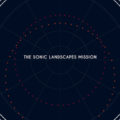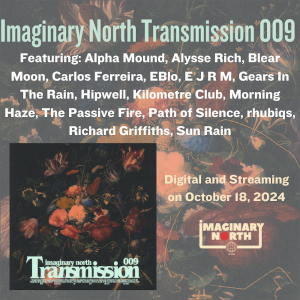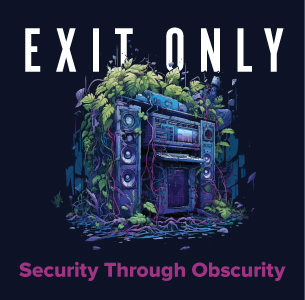Piano Day had its origin in 2017, an annual worldwide event which takes place on the 88th day of the year because that is the number of keys on a traditional keyboard. On this ECU anthology, the piano is one of the instruments in these compositions.

The piano knits together the atmospheric tapestry
An anthology of 12 compositions from EC Underground, a multidisciplinary artistic collective that has developed various complementary areas of activity and represent a roster of international electronic music and visual artists. The listening tempo overall is calming, peaceful and slow, there are exceptions (Geraldine Kwik’s “Loop”) but perhaps some listeners are always finding exceptional discoveries in every anthology.
“The 88 Notes reflects the piano in its diversity and allows artists from different styles and backgrounds to connect and celebrate the piano together. We picked very carefully artists who have been involved in the Piano Day project since the beginning in 2017 with Les Charades Électroniques, and artists that we’d like to see in the future.” ~ moicflo.com
Piano Day had its origin in 2017, an annual worldwide event which takes place on the 88th day of the year because that is the number of keys on a traditional keyboard. On this ECU anthology, the piano is one of the instruments in these compositions. I find it refreshing that this gathering is more about music rather than just capital P pianos. What you will hear throughout this album is the piano, sometimes in an ensemble.
This story opens with a solo piano, Marie Awadis – “Light” (4:48), with a dreamy soothing feeling, and an amazing sense of timing, imaginative inventions woven into the slow luxurious and simple fabric of the track. A haunting vision.
“Intimate and poetic, Marie’s music aims at communicating the depth of human emotions. Her music, always centered around her instrument, the piano, draws influences from the life experiences that have shaped her as a human, from deep roots in classical traditions to recurrent folkloristic harmonic elements of her native Armenia. Her compositions are centered around elegantly crafted melodies and their evolving discourse, at once deep and intimate, aimed to bring about simplicity through the sophistication of a classically crafted pianistic language.
“Born into a musical family in Lebanon, she started to take piano lessons at the age of nine, till she obtained a bachelor degree in piano performance from the Lebanese National Conservatory. The Armenian pianist and composer, based in Germany, is known for her musical depth and sensitive sound.” ~ www.marie-awadis.com
A story told with no words, Mihail Tunaru – “Memories” (3:56), using the piano and a sustained synthesizer drone expands slowly. I feel the quiet nostalgia and appreciate the gifted presence of Mihail Tunaru.
We begin as a solo piano exploration of the theme of sunrise, Mathieu Karsenti – “Dawn and Dew” (3:46). Things build along and shine.
“Mathieu Karsenti is an award-winning music composer for film, TV and stage with over 20 years experience of making music. Mathieu showcases here his composing voice: a modern contrapuntal/fugal modern hybrid with influences from minimalism, World and Jazz.” ~ mathieukarsenti.bandcamp.com
This next story features textural activity at a low density, resting just below the piano, which is soon joined by strange and interesting distorted vocals. A shy horn arrives. The piano knits together the atmospheric tapestry. WATINE – “Carry The Day” (7:01)
A movie of the mind, by closeyoureyes – “Bezmolvie” (4:32), listen as the piano blends with instrumental drone textures, there are backwards effects blended with the melody. The sparkling cloud slowly takes form and then floats and bubbles, releasing strings and dust rainbows.
This drama brings ringing electronic feedback (no obvious piano keyboard action) joined by chaotic percussive textures until a throb forms and builds then takes off, Holeg Spies – “Metarails” (Live 2019) (6:46). Enter the electric guitar, which scratches and crashes and fades into a repeating chattering machine that ultimately fades into ghost traces.
“Breaking norms, blurring the lines, and creating an immersive universe of sound for the listener to get lost in, but even more, travel around in…
“Holeg is one of the trail-blazing electronic music producers in France. He was part of the very first generation that was won over by techno music in the early 90s at the time he was studying law in Paris. By 1994, having become one of the DJs hosting the fast-multiplying, sometimes gleefully illegal raves of the time, Holeg and Jeff Mills joined the French DJ booking pioneer Outsoon, and flew off to India for the first official tour of electronic music there. Not just a trip, but an adventure. And it was followed by many more.” ~ www.spies.tv
Next, opening this tale with Geraldine Kwik – “Loop” (5:33), we find a dusty piano in an old hall long ago, soon there is an emerging hissing throb which breaks into full EDM boogie, and then we bring it down to just piano, but only for a short time before we bring back the boogie throb. The piano brings in new patterns that layer up while at the resolution, ultimately the boogie throb blends into the old hall sound.
“In the picture, the sound.
“Just like sound, image has its own language, a score that you have to know how to decode. It is this double culture of image and sound that has nourished my journey as a composer, both for advertising, fiction and for my artistic projects.” ~ www.geraldinekwik.com

A distant piano tentatively flows in with effects, the effects grow and take over, After the Pulse – “Acute Waltz (AtP vs Chopin)” (3:04), evoking the famous Minute Waltz in D-flat Major, Op. 64, No. 1 aka The Waltz of the Puppy (Valse du petit chien) Chopin’s composition echoes from the past and the ending is classical boffo.
“Conceived in 2009, the electronic music project After the Pulse by Greek composer Fotis Kyriazidis saw its first release, an electronic/ambient album called Wander, in 2014. It was followed by the dark ambient/audio storybook The Child Who Was A Flower. A third album is in the works.” ~ afterthepulse.bandcamp.com
Our tale, by Lorenz Weber – “Where the night is still light” (3:55), is delicate, the piano with a special focus on internal creaks made by the instrument, going slow, into the dark, without any distracting drama. The resolution is positive and uplifting.
“My current research interests centers on the concept of hope. Hope is often understood as a compound attitude, namely as a desire for an outcome plus a belief that this outcome is possible, plus some other component. My aim is to explore the consequences of research about the nature and rationality of hope for the role of hope in forgiveness, for an understanding of poverty and for the fight against climate change.
“I want to bring the generous, silent life of nature closer people. I want to show how important it is that we listen to the heartbeat of the earth, to participate in the life of the whole, so as not to forget that we are part of the earth.
“My music, photography and poetry should be the bearer of longing, like the dreams of our nights, like the rivers, seas, moving clouds and storms.” ~ lorenzweber.co
This story is a piano solo, AMNION – “My circling lament” (3:36), sad, slow and spooky. Some strange effects join later, maybe a bowed electronic instrument, and it all makes sense.
“AMNION is the brainchild of Roderick Price and is the vehicle for his dark, brooding style of electronic music. AMNION composes dense seething soundscapes using abstracted field recordings made from his localized surroundings and treated with generated electronic material. AMNION is also concerned with ideas related to surround sound and sonic immersion, both in production and performance.” ~ amnioticsounds.bandcamp.com
Snowdrops – “Le passage des anges” (4:43) Opens on the piano, with flickering electronics performing a changing range of interesting strange hints in the mix, with piano, strings, mellotron, electronics and the Ondes Martenot. I have never before heard one that I am aware of, the name means “Martenot waves” and was invented in 1928 by Maurice Martenot. This early electronic musical instrument can evoke a wavering sound, similar to the more famous Theremin. You can use a keyboard or slide a ring along a wire. One sits down to play the Ondes Martenot.
“Formed in 2015 by Mathieu Gabry and Christine Ott, Snowdrops draw from a unique combination of contemporary classical, jazz, electronic music and film score.” ~ snowdrops.bandcamp.com
The final tale, Lyli J – “Mirage” (6:17), opens within an electronic frame establishing a place for the piano. As it proceeds, the keyboard and the slow electronic tones create a duet perhaps having a dialog about an illusion. The piano is steady while the electronics whirl about in the distance, and everything is slow. Perfect.
“In Lyli J’s world, the felt touch of the piano melts into ancient harmonies, surrounded by the deepest warmest textures you will hear in organic electronica. Through field recordings, she captures her fascination for nature and combines her vocals and instrumentals with pure synthesis using hardware and software synths.
“Moving across over 10 countries in the past 3 decades, she soon realized that music exists as her roots and true home within. Her unique sound mixes elements of trip hop, ambient and indie electronica, with complex IDM like grooves that weave a tapestry underneath crystalline Celtic melodies.
“Lyli’s music is made for elves and all sensitive soul-searching wanderers.
“[to be enjoyed in open, natural spaces]” ~ lylijmusic.com
The 88 Notes (Series 1) is available on EC Underground. [Bandcamp | Site]










